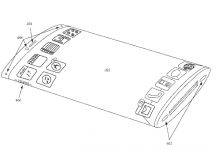I certainly looks as if it might be, as the videos on Engadget show. Engadget has an article full of pictures and videos about the new product, As fjtorres, who give me the heads up, points out there are rumors about Amazon and MS getting together to respond to the iPad and hints at CES about an MS/Blio collaboration. Here’s one of the videos from the article:
© Copyright 2016 TELEREAD - For people who love books and gadgets. Est. 1995. Website Design & Marketing Credits
































As with most things Microsoft the speculation of a new product and it’s capabilities is always so much more interesting than what they tend to actually sell.
I’d prefer these things to be called ‘animations’ rather than ‘videos.’ These are merely concept pitches — ‘Here’s how we would like the thing to work’ — and have very little to do, normally, with how any actual product does work when it gets sold to us.
We don’t have any idea when this device might be sold. Microsoft has not yet said it would sell the thing. This is just a pitch, apparently from a subcontractor, to MSFT management, to give them the green light to develop it into a working prototype, then, eventually, something you and I could buy.
We don’t even know what OS this would be using. Some rumors claim Windows 7, but Windows only runs on x86 chips, and that would kill any potential for all-day battery life (compare the 2-3 hour life of Win7-based slates vs. the 10-hour life of iPad and other ARM-based slates). It might use Windows Phone, but then it couldn’t even be developed until after WinPhone 7 Series is finalized, probably sometime this summer. A LOT of work would then have to be done.
I do like this concept. I’d like dual 10″ screens for e-magazine reading. But these animations look like they are aiming (for now) at 6″ or 7″ screens for the same size as a dayplanner.
As to how well the touch would work, coming from Microsoft, does not raise any hopes. Bill Gates has been a big fan of pen-based computing going back to the 1980s, but he is gone now; and even when he was running the company, the best Microsoft could come up with was an overstuffed copy of the Palm Pilot.
We’ll just have to wait and see. And we’ll have to wait at least a year, more likely 2; by then Apple’s phoneOS will be up to gen 5, and Android will be up to gen 4. The whole smartbook world will be born and go through its early stages before this device can reach the market.
— asotir
As history has shown, don’t believe the marketing fluff about a Microsoft product until you can hold said product in your hands.
Until then it’s just vaporware of the “Look at me, I have one too! And it’s better!” variety intended to draw attention away from Microsoft competitors and suck the enthusiasm for non MS products out of the air. Microsoft is a past master of this tactic. (That and product astroturfing.)
Well, now…
I know the MS name is a kiss of death in *some* circles but then, in other, larger circles, it certainly brings a lot of credibility. And not because of any misplaced brand loyalty. (MS? Brand loyalty? Does that even exist?)
1- Courier working prototypes have been floating around since last year. MS has been working on the concept for over a decade. And they have been selling products leading up to this for even longer.
2- The Engadget article from last friday makes it clear the Courier comes from the same people behind the XBOX 360, ZuneHD, WinMo7, and the Pink Phones coming to Verizon shortly. A group known for optimizing the hardware to the software, instead of the (more common) opposite practice.
3- The Engadget article lists a Q3/Q4 release date which is quite reasonable given that the Pagestream functionality in the embedded video comes straight out of OneNote, which is a stable, reliable and generally acclaimed personal information management product that has been around for 7 years.
http://en.wikipedia.org/wiki/Microsoft_OneNote
Which means it easily runs on sub-GHz CPUs.
4- The reported specs of a Tegra2/WinCE6 core overlaid by a Silverlight/XNA-based UI are the same as the ZuneHD and the higher-end WinMo7 Phones so, while launch app support is likely to be limited, the Courier would inherit a ton of XNA games from the 360 and the bulk of the high-res apps from the WinMo7 environment. Oh, and neither ZuneHD or the WinMo7 phones are taking any flack for their touch interfaces, rather the contrary.
4- Given that Courier is clearly designed as a focused information-management tool, not a generic webpad/almost-PC, the required code base is not an issue for Microsoft; they already have battle-tested code to deliver the features shown. Courier is literally built out of current, off the shelf, proven tech.
In other words: there is no reason *not* to believe Engadget that Courier is a 2010 Product.
Now, MS might still kill or delay the Courier.
They may not be able to hit the desired price point; those dual righ-res screens aren’t as cheap as a single lower-res panel and Courier will need to ship at $699 or less. Or, much less likely, the iPad might tank so badly as to taint the whole connected tablet category, but barring a major catastrophe, we *will* be seeing a *lot* of devices exploring this particular design space between cellphones and laptops. And MS has as much right as anybody else to give it a try.
Whether these new products come from Microsoft, Apple, Nokia, Archos, Xiliv, or wherever shouldn’t matter to anybody but fanboys. Anything that moves the technology base forward is good for everybody…
…except for the BPH execs who are apparently still trying to grasp the implications of last century’s tech explosion. 🙂
To me, the only real questions about Courier are what will it cost and whether there will be an A4 version for the Higher Education Market. Displaying textbooks isn’t enough, as Kindle DX’s experiment has proven; the higher ed market requires robust information management features in any future textbook reader device. And that, folks, is a humongous market just ripe for the plucking.
That there will be a *lot* of Courier-like devices from dozens of vendors is a done deal. We already know of three, after all.
All that remains is to tally them, weigh them and measure them, and let the market sort’em out.
Going to be fun, really!
Given that Courier is clearly designed as a focused information-management tool, not a generic webpad/almost-PC, the required code base is not an issue for Microsoft; they already have battle-tested code to deliver the features shown. Courier is literally built out of current, off the shelf, proven tech.
I have not seen any Windows CE apps that do exactly what is shown here. Maybe a few applications in Windows if you stretch a few things but even there not at this level of polish as provided in this presentation.
Apple only had to embiggen the iPhone and tweak a few things in the OS. Add that to the fact they have proven hardware to work from. They still are way ahead of the game than anything Microsoft has provided for it’s customers as of right now.
Check the Wikipedia links: OneNote does everything in that demo and has been doing it for years.
WindowCE may or not not have Journaling Apps but PocketPC most certainly does (there is a big difference between the two, you know). It also supperts multitaskig, multi-threading, and even Flash video if it comes to it.
The issue isn’t what binary code may meet the functionality of the demo or what OS it runs on, but rather the source code and underlying algorithms and data structures. Add in the high-grade handwriting recognition and voice recognition software MS can draw on and they already have a full toolkit to make Courier work. And work it does; the Courier prototypes are genuine functional hardware as this site and others have been reporting since last year.
It may be satisfying and fashionable to bad mouth the big, entrenched software houses like MS, IBM, and Adobe but they have massive inhouse expertise in creating quality software and tons of resources to draw upon. They may be reputedly big and slow but when they want to, they can be deadly fast; just witness how fast Adobe took over the ePub standard and made it their own. Ignore them at your peril.
Microsoft in particular *benefits* by being badmouthed and underestimated, especially by the Open Source zealots who conveniently ignore their strengths and how they are quietly and effectively carving up several new markets above and beyond their existing cash cows (Windows, Office, Windows Server, Exchange, SQL server, Sharepoint, etc). Ignore them at your peril.
Don’t want to believe they can deliver Courier this year? Go right ahead; you’re entitled to disbelieve.
But OneNote is real and deployed by the millions.
And a hardware implementation, in either B-size or A-size format Couriers, will find a ready and willing market.
How much of a market will depend on pricing, not on the brand.
And not on the believers or disbelievers.
[shrug]
It may be satisfying and fashionable to bad mouth the big, entrenched software houses like MS, IBM, and Adobe but they have massive inhouse expertise in creating quality software and tons of resources to draw upon.
Actually it is not just “bad mouthing” and they are getting in big trouble with the professional IT market for continued security issues for those who have to run at enterprise licensing levels. Thousands and thousands of clients.
So no, they do not have “solid reputations” which is why companies are choosing to turn off products like Flash or Adobe Reader in their business laptops. Once a product starts being turned off at work things tend to change at home. It’s not just Apple complaining if you read the tech blogs about enterprise security fixes and such.
For those doubting Microsoft’s ability to deliver the Courier features this year:
http://news.cnet.com/2300-13860_3-10002858.html?tag=newsLeadStoriesArea.1
It turns out that OneNote is one of the standard features of Windows Phones running Windows Mobile 7. The coding is done.
Now.
Up and running in the emulators provided to developers.
As the engadget article pointed out, Courier is supposed to share a lot of code with ZuneHD and WinMo7. Well, OneNote is key to Courier and if it is a standard element of WinMo phones then Courier is hardly presentation-ware.
It still remains to be seen if the hardware side can deliver Courier in time, at a practical price. But the software? The software is in hand.
Update:
1- Yes, Courier *was* real.
2- Was, because it’s been cancelled.
http://www.msnbc.msn.com/id/36857111/ns/technology_and_science-tech_and_gadgets/
Too bad, it would’ve made a great textbook reader.